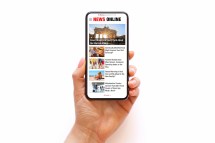Creating a family tree is a wonderful way to celebrate your heritage and visualize your ancestry. Microsoft offers several family tree templates that serve as a great starting point. However, to make your family tree truly unique and reflective of your family’s story, personalization is key. In this article, we’ll explore effective tips and tricks for customizing Microsoft family tree templates to help you craft a meaningful and personalized genealogy chart.
Choosing the Right Microsoft Family Tree Template
Microsoft provides various family tree templates through applications like Word, PowerPoint, and Excel. Each template differs in style, complexity, and layout options. Start by selecting a template that fits the size of your family, the generation depth you want to display, and the visual style you prefer—whether it’s traditional or modern. Consider if you want space for photos or detailed information about each member.
Adding Personal Details to Your Family Tree
Once you’ve selected a template, enrich it by adding personal details such as birthdates, marriage dates, places of origin, or brief biographies. This turns your family tree from just a diagram into an engaging storybook of your ancestors. Use text boxes creatively within the template to include these facts without cluttering the design.
Incorporating Photos and Visual Elements
Visuals bring life to any family tree. Most Microsoft templates allow you to insert images beside names or inside shapes representing individuals. Scan old photographs of relatives and add them to relevant sections of the chart. You can also use icons or symbols (e.g., flags for countries) that represent cultural backgrounds or special achievements.
Customizing Colors and Fonts for Better Aesthetics
Personalize colors and fonts within the template to match your family’s personality or match existing home decor if you plan on printing it out as wall art. Use contrasting colors for readability but keep it harmonious so that it doesn’t distract from information clarity. Microsoft tools provide easy ways to change color schemes globally throughout the document.
Utilizing Advanced Features Like Hyperlinks & Notes
For digital versions of your family tree created in PowerPoint or Word, consider adding hyperlinks leading to more detailed genealogical records stored online or on cloud services like OneDrive. You can also add comments or note features within cells (in Excel) or text boxes (in Word), which allows viewers access additional context without overcrowding the main view.
Customizing Microsoft family tree templates enables you not only to document lineage but also capture stories that make up who you are today. With these tips—choosing suitable templates, incorporating personal data & photos, adjusting aesthetics thoughtfully, as well as leveraging advanced features—you’ll create an engaging artifact treasured by generations ahead.
This text was generated using a large language model, and select text has been reviewed and moderated for purposes such as readability.






